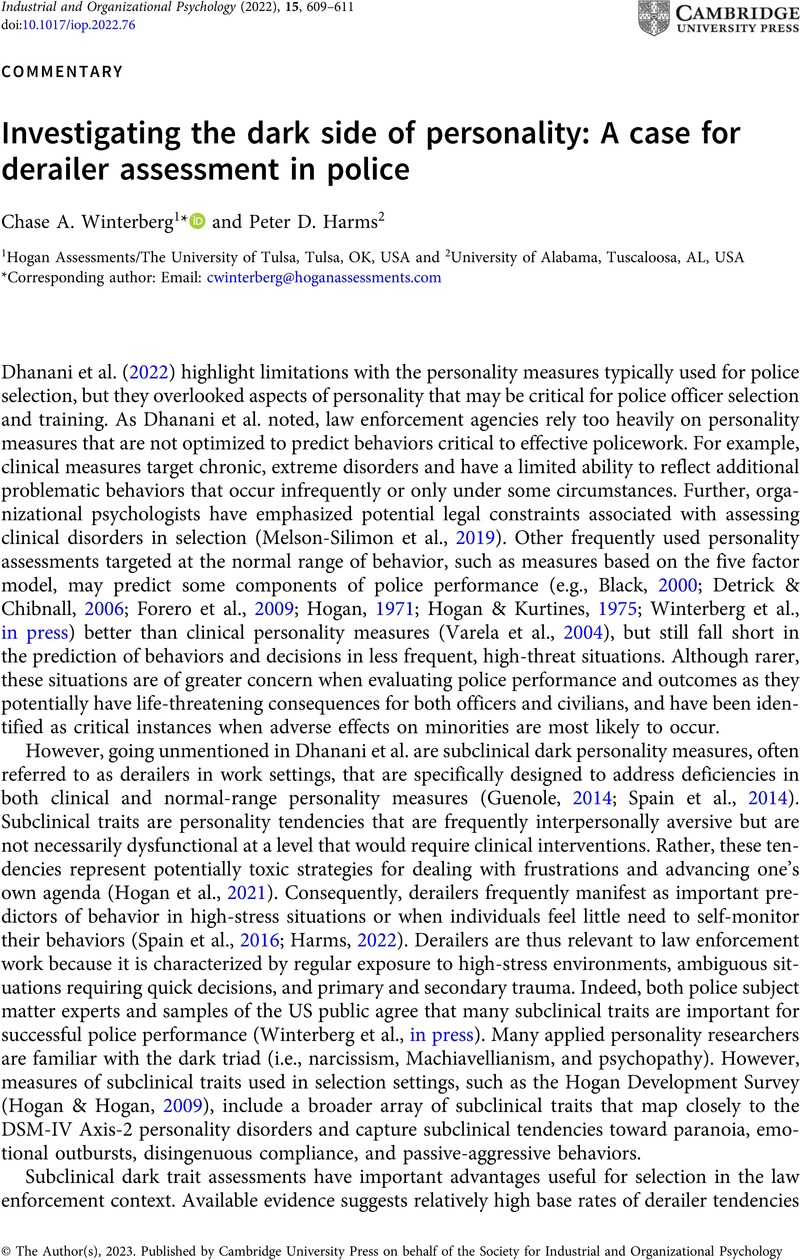Harmata, R., &
Sherman, R. (
2021, April) One bad apple ruins the bunch: A critical examination of “dark” personality and job performance among police officers. In R. Harmata & R. Sherman (Chairs),
Good cop/bad cop: A deep dive into police officer personality. Symposium presented at the 36th Annual Conference of the Society for Industrial and Organizational Psychology, New Orleans, LA.
Google Scholar 